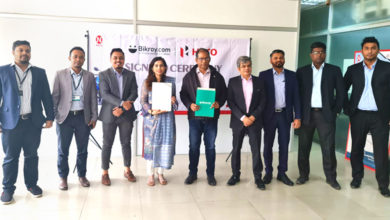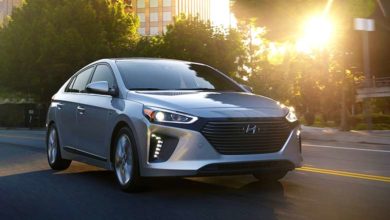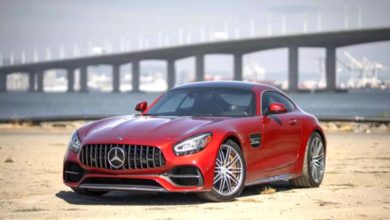The New World Order – Rise of the Korean Automotive Giants

The Koreans have been building cars since the early 70’s, primarily focused on three brands: Hyundai, KIA and Ssangyong. Building everything from small hatchbacks and family sedans to off-roaders and heavy equipment, these brands rolled out vehicles largely designed for the export market. Now, after 48 years of existence, Hyundai Motor Company is the fourth largest automaker in terms of annual vehicle sales and number of units made.
It all started in the aftermath of the Korean War. The United States pumped foreign investment and aid into South Korea, making it a model for the large scale industrialisation and rampant economic growth that capitalism can bring about – that was the way it worked during the Cold War. Want to crush communism in a country? Turn the neighbouring states into gleaming beacons of capitalist enterprise and inflate the standards of living in those countries with consumer products the communist states can never hope to rival.
One of those products was personal transport. The first Korean car rolled out from Hyundai in 1975 – the Hyundai Pony. Terrible name, but it had all the necessary components to define the brand from the start. It was styled by Italian styling maestro Giorgetto Giugiaro of Italdesign, the designer who gave the automotive world gems like the Lotus Espirit and DeLorean DMC-12, of Back to the Future fame. Underneath, the Pony was a medley of Mitsubishi components, and even back then Japanese engineering meant that the compact rear wheel drive Pony was reliable and efficient, although, as is the case with most upstart brands, the build quality was the weakest link. It was South Korea’s first mass produced car, and they were audacious enough to start exporting it to Chile, Argentina, Colombia, Ecuador, Egypt first in 1976, then in 1978, to Ecuador, Belgium, Netherlands and Luxembourg. An updated version was the first Korean car to be sold in the UK in 1982, where it competed against lackluster offerings from British Leyland. Ironic, then, that the car was developed by a team of ex-British Leyland engineers.
This is perhaps the turning point that charted the respective courses of the Japanese and the Korean automotive industries: the Japanese would hold off on worldwide export for decades, perfecting and refining their product and employing a host of ninja sales and marketing tactics before approaching a global market. The Koreans just built a car and decided to export it, regardless of how well it went with their target markets. In a way, the gamble sort of worked for the Koreans, and they would employ this tactic of selling first, learning from mistakes and then trying again with the next model. Over a span of 20 years, the Koreans kept updating and revising in small steps, while the Japanese and the Europeans rose to incredible heights, fell, then maintained a steady state of offering exactly what the customers wanted. Come the mid-2000s, the Koreans would be in a perfect position to start moving up in the world, and that’s exactly what they did.
The first indication of what the Koreans could do in a globalized world came with the Sonata. Here was a car with sky high aspirations, targeting solid competition from Honda’s Accord and Toyota’s Camry, both best-selling models in North America and Europe, with a long history of refinement, luxury, reliability and the all-important factor of brand image. The Sonata, by comparison, was largely unknown outside of an Asian context, and was initially considered a cut-price alternative to the established badges of the Accord/Camry. With the launch of the sixth generation Sonata in 2009, the car-buying market had mostly shrugged off its aversion to the Hyundai badge and embraced it as a maker of well-equipped and sturdy executive sedans with funky designs and a forward thinking attitude. Yeah, the design was copied off the Accord and the choice of materials for the interior left a lot to be desired, but it heralded a coming of age for the Sonata, where it wasn’t just an afterthought listed after other cars but listed along with them as a viable alternative.
Since the mid-2000s, the Hyundai badge has leaped forward with the same gusto as South Korea’s economy – in 1960, South Korea’s per capita GDP was lower than Ghana, come 2010, it would be the 13th highest in the world. As of 2013, Hyundai vehicles are sold in 193 countries through some 5,000 dealerships and showrooms, bringing in an astounding US$ 86 billion in revenue in 2013 alone. Models like the Hyundai Tucson, Santa Fe, Elantra and Accent regularly top sales charts in North America and Asia in their respective vehicle classes, and a foray into hybrid propulsion has Hyundai pegged as one of the future players in the race to make automobiles more environmentally friendly.
The 2017 model Elantra, targeted at the Honda Civic-Toyota Corolla-Mazda 3-Mitsubishi Lancer class, is a clear display of Hyundai’s intent with its brand image. While the rest of the cars in this class are relying on long-established brand names to shuffle units out of the dealership doors, Hyundai has decided the way to beat the competition is to load each car with an insane amount of features and tech, make the design streamlined and less messy than their rivals, and lower costs to get whatever price advantage they can muster up. In a segment such as this, the buyers are mostly those looking to buy their first cars with their own, hard-earned money. Cut even a minuscule amount and buyers will flock to your dealership – Hyundai has used this method to pry buyers away from the Accord and Camry with the Sonata, and they’re doing it again with the Elantra against the Civic/Corolla/Lancer.
Its not just the bottom end of the market or the mid-range where Hyundai plans on dominating, either. In November 2015, Hyundai launched the Genesis sub-brand, made to cater to the high-end luxury car market and challenge the authority of brands like Lexus and Acura, and eventually the German holy trio of BMW-Mercedes Benz-Audi. With their Genesis New York concept, they showed that they too, could take on the luxury car market and fight with flair and charisma. And all of this is excluding the other brand under Hyundai’s corporate banner: KIA.
It’s safe to say that the globalized world of today is upturning long-held notions about the market for automobiles. The Germans are not the only ones making efficient cars, the Japanese art of making a car run forever without trouble has been copied and pasted successfully, and the Koreans aren’t just sticking to stinky little hatchbacks that no one ever buys unless they’re economically deprived. It truly is a new world order, then.
Except the United States still builds cars that are too big, too inefficient and too American to actually sell anywhere else. Some things actually never change.











